For some people, bringing batteries on a plane always feels like a guessing game.
Are they allowed in your carry-on or checked bag?
What types are okay and what types are just asking for trouble?
In this article, we will remove all of the confusion by clarifying the TSA and FAA rules for bringing your batteries whether it is in a carry-on or in your checked bag.
Table of Contents
Can you bring batteries on a plane?
Yes, you can bring most batteries for personal use in your carry-on and through a TSA security checkpoint.
Most batteries allowed in your carry-on can also be brought in your checked baggage although you are not allowed to bring spare lithium batteries in your checked baggage.
Electronics containing lithium batteries like laptops are allowed in checked baggage but the FAA recommends putting them in your carry-on.
Approval by the airlines may also be needed for larger lithium batteries.
Below, I break down all of the different types of batteries and electronics you may think about bringing to give you even more clarity so be sure to keep reading!
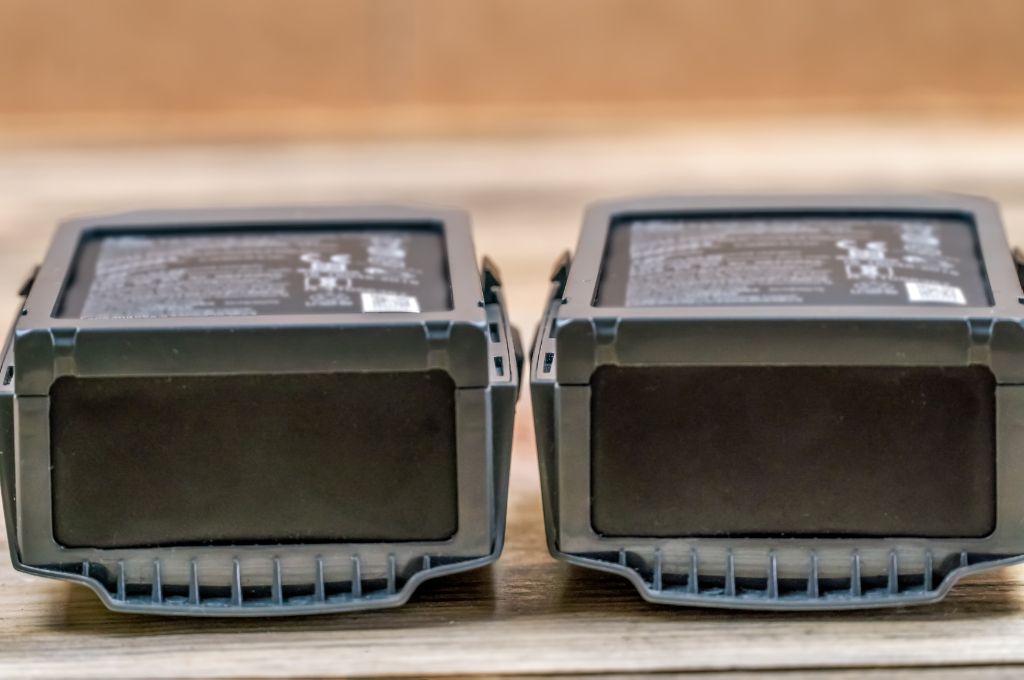
Three key things to know about bringing batteries on a plane
Carry on vs checked baggage
When bringing batteries on a plane the first thing you want to think about is whether or not you are bringing your items in your carry-on or checked baggage.
There are not many restrictions when bringing batteries in your carry-on.
Aside from bringing large lithium batteries and protecting spare batteries from short circuits, you don’t really have much to worry about.
However, there are certain battery types that are completely banned from going in your checked baggage.
Also, the FAA generally discourages people from bringing electronics containing lithium batteries in checked baggage.
Not only can it be a little bit risky sometimes but you also risk theft and damage to your device so I would advise you to follow the FAA guidelines as much as possible.
Batteries inside electronics vs spares
The second major consideration is: are your batteries located inside of electronics or are they spares?
Spares are just batteries by themselves.
For example, you may have an extra camera battery that you keep in a pouch in your camera bag.
Anytime you are bringing spare batteries you need to be careful about damage and short circuiting.
Damage is usually straightforward. If you have a battery that is busted up that won’t be allowed.
But you also are not allowed to bring batteries that have been recalled or that have a tendency to create sparks or generate a dangerous evolution of heat. These are not allowed in your carry-on or checked bag.
Short-circuiting is basically whenever the ends of a battery come into contact with another battery or something metal like coins, keys, etc.
This could create sparks and heat which could be very dangerous for batteries stowed away in the baggage hold and in the aircraft cabin.
To prevent a disaster, the FAA recommends that you prevent short-circuiting by:
- Leaving the batteries in their retail packaging
- Covering battery terminals with tape
- Using a battery case
- Using a battery sleeve in a camera bag
- Putting them snugly in a plastic bag or protective pouch
Quantity limits
Aside from large lithium batteries and non-spillable wet batteries, there are no quantity limits for bringing batteries as long as they are for personal use.
So if you are bringing batteries for further sale or distribution (e.g., vendor samples), those are prohibited.
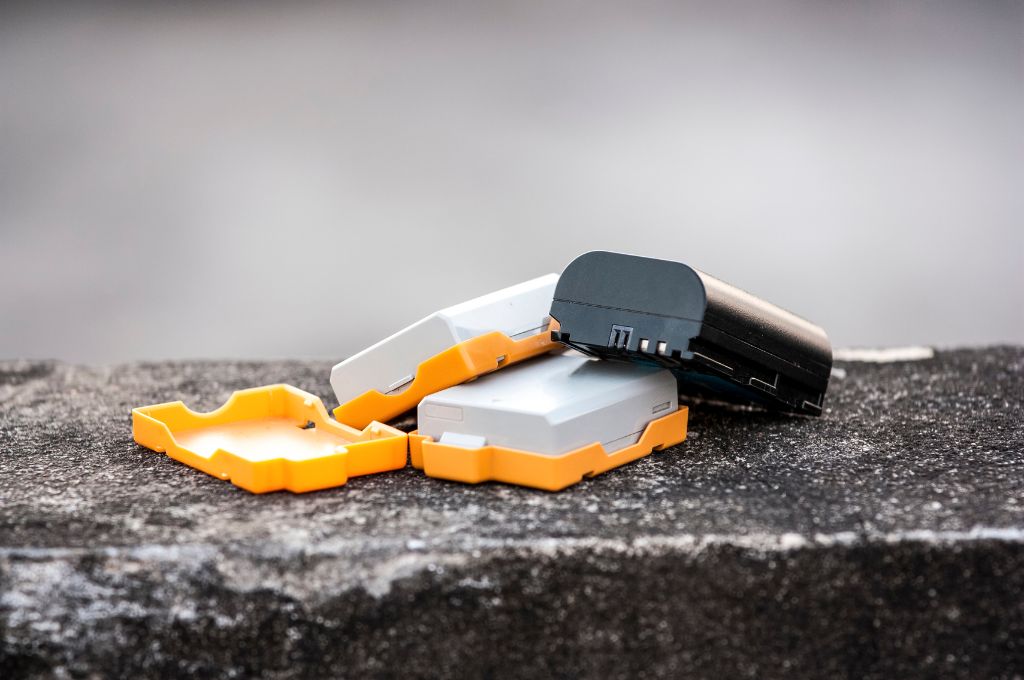
Different types of batteries
Various types of batteries have distinct regulations, so let’s explore some of the battery varieties you might consider bringing on a plane.
Dry alkaline batteries (your typical AA batteries)
Dry alkaline batteries are some of the most common batteries used in electronics.
These are often your typical AA, AAA, C, D, button cell, 9-volt, etc., used in every day items like flashlights, headlamps, portable fans, etc.
Common brands include Duracell and Energizer.
Alkaline is very common but you also may have rechargeable dry batteries with nickel metal hydride, nickel cadmium, etc.
You can bring these dry batteries in your carry-on or checked bags whether they are inside of electronics or brought as spares.
If you’re bringing them as spares they need to be protected from damage and short circuit.
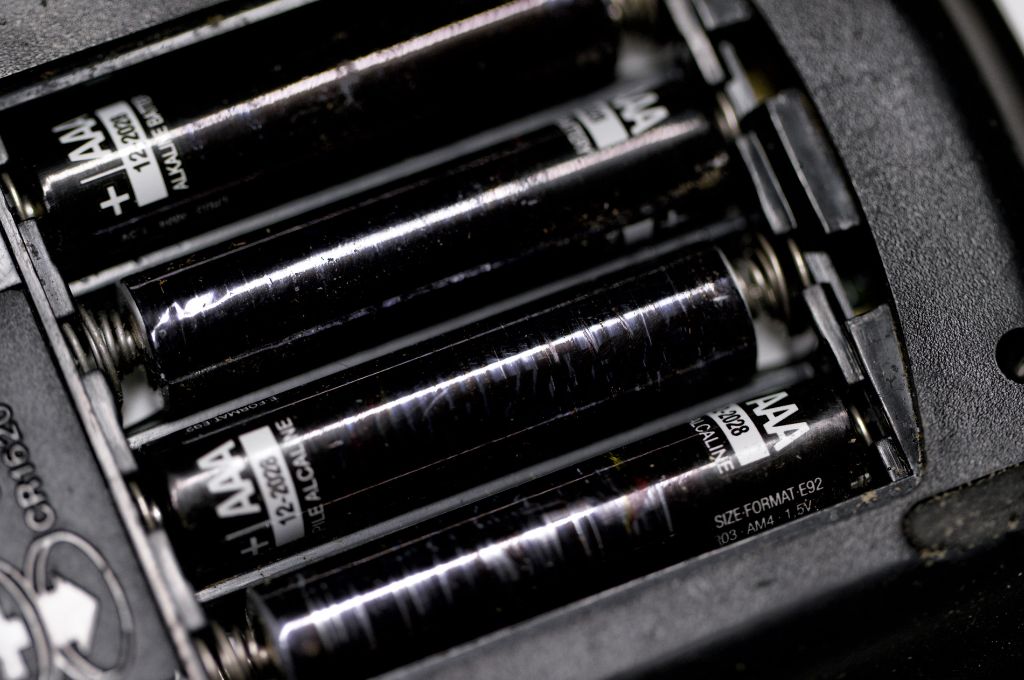
Lithium batteries
Most of the worry and confusion when traveling with batteries is related to lithium batteries.
Lithium batteries can come in two main different forms:
- Lithium ion
- Lithium metal
Lithium ion batteries are commonly found in popular electronics like: cell phones, tablets, laptops, cameras, etc.
You are allowed to bring lithium ion batteries in your carry-on in unlimited quantities (for personal use) whether they are spare batteries or inside of electronics.
However, they must be limited to a rating of 100 watt hours (Wh) per battery.
How do you know what the lithium rating is?
Well, newer lithium ion batteries should have their Wh marked on them.
If you don’t see it, you can still work it out by finding out the bolts and amp hour numbers using this formula: Watt hours (Wh) = Volts (V) x Amp hour (Ah).
Keep in mind some airlines will require proof of the Wh, especially for larger items.
Here are some common watt hours used in batteries for various electronics:
| Category | Product | Wh |
| DSLR Camera | Canon 6D | 11 |
| Tablet | iPad Pro 12,9 ″ WiFi + Cellular (5th Gen, 2021) | 40.33 |
| Laptop | MacBook Pro (16-inch, 2021) | 99.6 |
| Cell phone | iPhone 14 Pro | 12.38 |
Contrary to what many believe, you can bring lithium ion batteries in your checked baggage as long as they are inside of the electronic device.
So for example, you could bring your lithium-ion powered laptop in your checked baggage. (See the section below on personal electronic devices for more detail.)
You will still need to get special permission if you go above the size requirements which I’ll talk about below.
And you also need to keep in mind that certain lithium powered devices like vapes are never allowed in checked baggage.
But the biggest thing to note is that spare lithium (ion or metal) batteries are never allowed in checked baggage.
These include power banks, external battery chargers (portable rechargers), and cell phone battery charging cases

Larger lithium batteries
If you want to bring larger lithium ion batteries you have to abide by special size requirements and also get permission from the airline.
With airline approval, you can carry up to two spare larger lithium ion batteries (101–160 Wh) or Lithium metal batteries (2-8 grams).
According to the FAA, “This size covers the larger after-market extended-life laptop computer batteries and some larger batteries used in professional audio/visual equipment.”
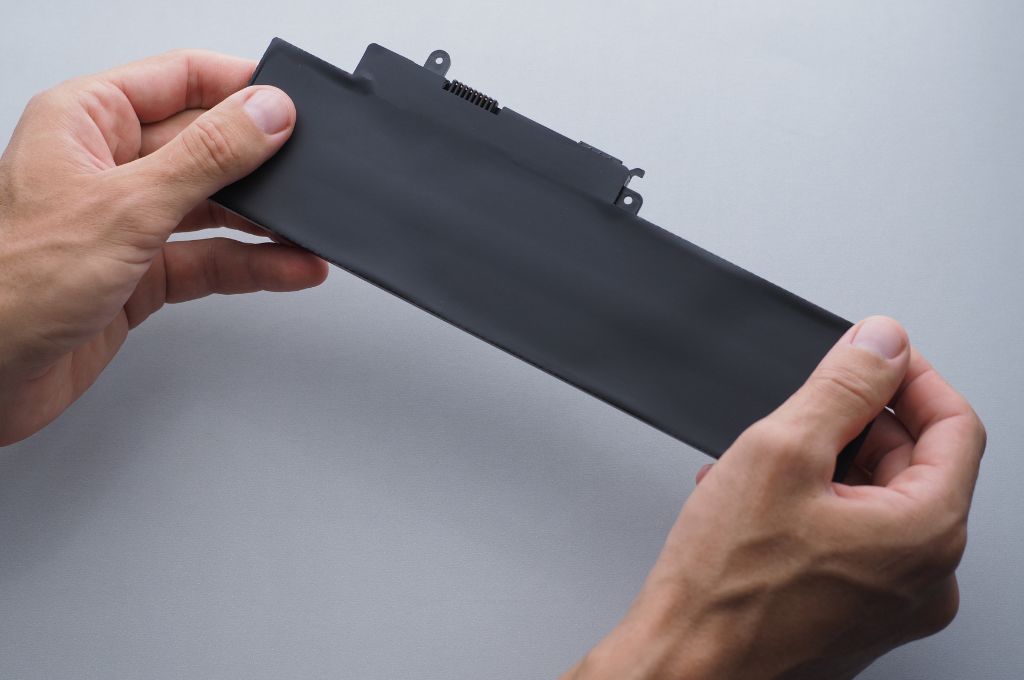
Lithium metal devices
Lithium metal (non-rechargeable) batteries are limited to 2 grams of lithium per battery.
These include all the typical non-rechargeable lithium batteries used in cameras (AA, AAA, 123, CR123A, CR1, CR2, CRV3, CR22, 2CR5, etc.) as well as the flat round lithium button cells.
They can be brought as a carry-on although spares are not allowed in checked baggage.
With airline approval, passengers may also carry up to two spare larger Lithium metal batteries (2-8 grams).
Nonspillable wet batteries
Nonspillable batteries with absorbed electrolyte (gel cell, absorbed glass mat, etc.) used in portable electronic devices must not exceed 12 volts and the battery watt hour rating must not exceed 100 watt hours.
These can be brought in your carry-on or checked baggage.
Just keep in mind:
- No more than two spare (not installed in device/equipment) batteries may be carried.
- Spare/uninstalled batteries must be in strong packaging.
- Battery and outer packaging must be marked “nonspillable” or “nonspillable battery.”
- Battery-powered equipment must be protected against accidental activation.
There are separate exceptions for powered wheelchairs.
Commonly brought items with batteries
Many items come equipped with built-in batteries, so let’s delve into some of these and determine what is permissible and what is not.
Personal electronic devices
Pretty much every traveler is walking around with multiple personal electronic devices nowadays.
These include things like: cell phones, cell phone battery charging cases, laptops, cameras, tablets, watches, etc.
If you’re electronic device has lithium metal or lithium ion batteries (laptops, smartphones, tablets, etc.) it is allowed in checked baggage but should be carried in carry-on baggage when possible.
When portable electronic devices powered by lithium batteries are in checked baggage, they must:
- Be completely powered off
- Protected to prevent unintentional activation or damage
If the device can generate extreme heat, the heating elements should be isolated by removing the heating element, battery, or other components.
The FAA allows you to bring in as many personal electronic devices as you want for personal use but just keep in mind the quantity restrictions on larger lithium batteries and spare nonspillable wet batteries.
Smart luggage with batteries
Some luggage comes with battery-powered features.
Baggage equipped with lithium batteries must be carried as carry-on baggage unless the batteries are removed from the baggage.
The exception to this is if the smart luggage contains lithium metal batteries with a lithium content not exceeding 0.3 grams or lithium ion batteries with a watt-hour rating not exceeding 2.7 Wh.
In those cases, it can go in checked baggage.
Battery-powered E-cigarettes (e-cigs), vaporizers, vape pens
TSA allows passengers to bring electronic cigarettes and similar devices (vaporizers, vape pens, mods, atomizers, and electronic nicotine delivery systems) through airport security as a carry-on.
However, these devices are prohibited in checked baggage.
Read more about bringing vapes through TSA here.
Lithium Battery Powered Lighters
Tesla coil lighters, flux lighters, arc lighters, double arc lighters are allowed in your carry-on but not in checked baggage.
We have a full breakdown bringing lighters through airport security and you should check that out if interested.
Recreational vehicles powered by lithium ion batteries
Recreational vehicles are those battery powered hoverboards and other similar small electronics that people love to wipe out on. See YouTube.
You can bring these in your checked or carry-on bag but the airline must approve of them. Many airlines do not allow these so it’s not a guarantee.
Remember, a device with a lithium ion battery that exceeds 160 watt hours (Wh) is prohibited as carry-on or checked baggage.
Medical devices
If you have a medical device like a pacemaker with a lithium ion battery, whether implanted, externally fitted, or carried on your person, the same limits for personal electronic devices apply.
So basically there are no quantity limits unless you are carrying larger lithium batteries and spare nonspillable wet batteries.
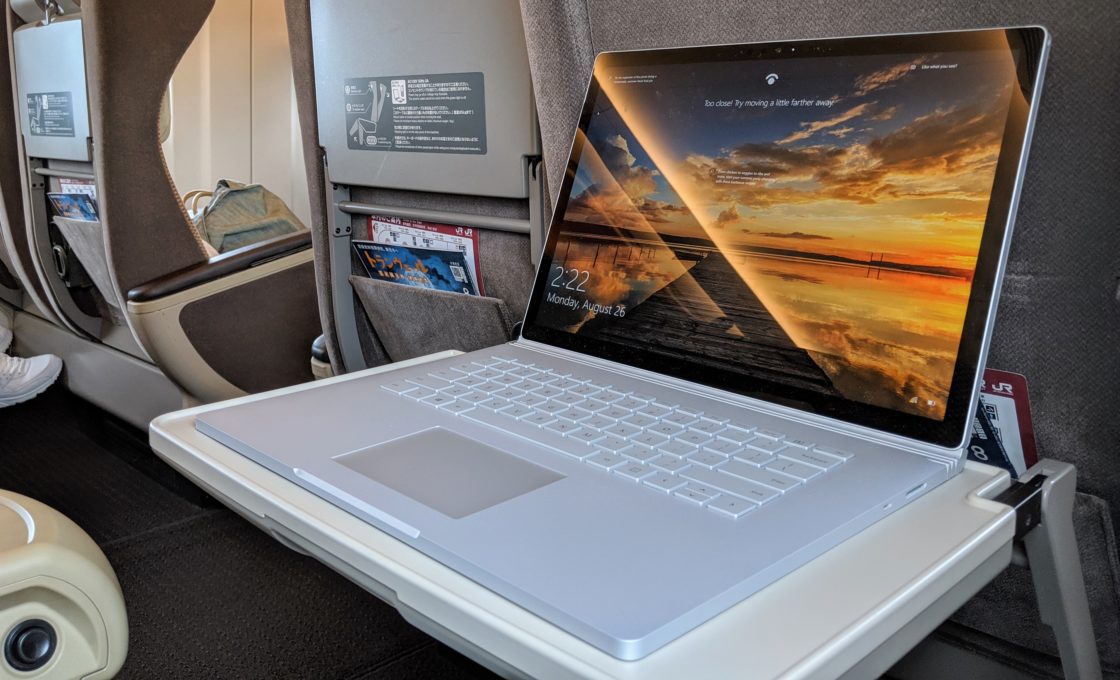
Checking your bag at the gate or plane side
Sometimes you may have to check your bag at the gate just before departure. This usually happens whenever you are flying basic economy or have a boarding position towards the end of boarding.
If this happens, you need to make sure that the bag you are checking complies with all of the rules above.
If you get stuck in this situation my device would be to just tell the flight attendant or crew member that your bag has lots of lithium-ion items in it and you would prefer to not carry them with you in the cabin.
This may be enough for them to choose someone else over you to check their bags.
Final word
Hopefully, after reading this article you can see that bringing batteries through airport security and in your checked bag is doable.
As long as you pay attention to the size and quantity limitations and take care to prevent short-circuiting, you can bring a lot of batteries with you on your travels.
Daniel Gillaspia is the Founder of UponArriving.com and the credit card app, WalletFlo. He is a former attorney turned travel expert covering destinations along with TSA, airline, and hotel policies. Since 2014, his content has been featured in publications such as National Geographic, Smithsonian Magazine, and CNBC. Read my bio.

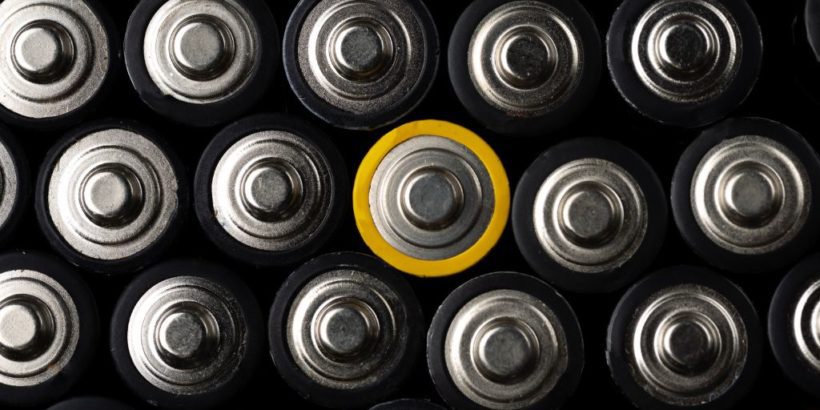
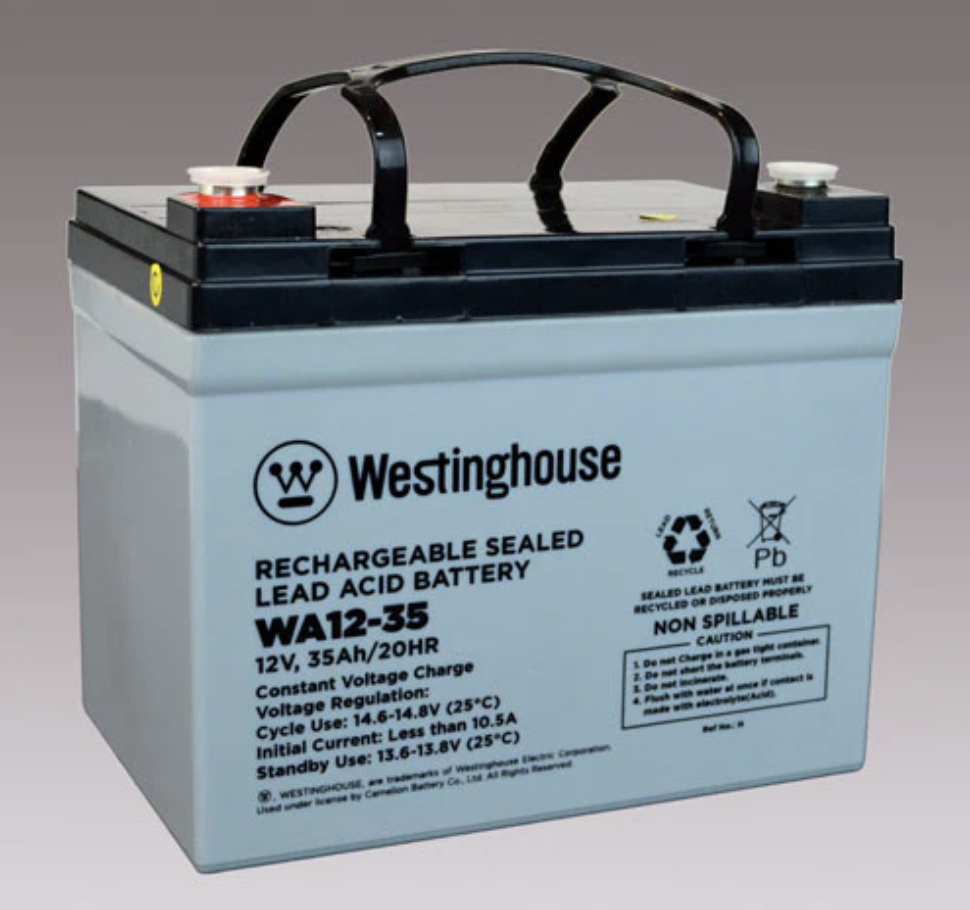
I still am not sure if can bring an 18-volt NiMH rechargeable battery for a DeWalt power tool in my check-in luggage or carry-on??? I have a DeWalt construction radio in the Philippines that needs a new battery.